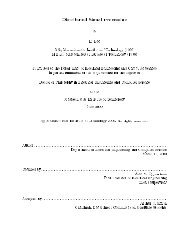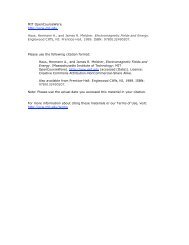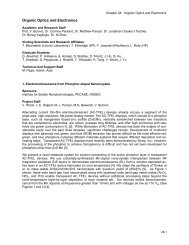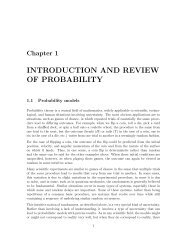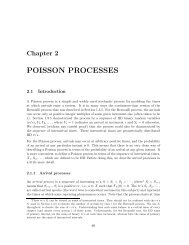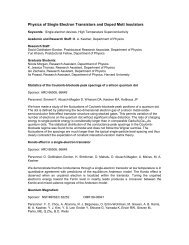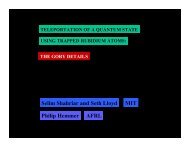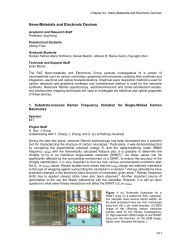Automotive Power Generation and Control - IEEE Xplore
Automotive Power Generation and Control - IEEE Xplore
Automotive Power Generation and Control - IEEE Xplore
You also want an ePaper? Increase the reach of your titles
YUMPU automatically turns print PDFs into web optimized ePapers that Google loves.
628 <strong>IEEE</strong> TRANSACTIONS ON POWER ELECTRONICS, VOL. 19, NO. 3, MAY 2004<br />
Fig. 17.<br />
C<strong>and</strong>idate dual-voltage architectures: (a) dc/dc converter architecture, (b) dual-stator alternator architecture <strong>and</strong> (c) dual-rectified alternator architecture.<br />
Fig. 19. Dual-rectified alternator architecture implementation using the<br />
switched-mode rectifier structure.<br />
Fig. 18.<br />
Particular implementation of the dual-rectifier alternator architecture.<br />
of the low-voltage bus <strong>and</strong> jump charging (if a bidirectional<br />
converter is used), but tend to suffer from the high cost of<br />
dc/dc converters. Other c<strong>and</strong>idate dual-voltage architectures,<br />
illustrated in Fig. 17(b) <strong>and</strong> (c), rely on dual-stator alternators<br />
or dual-rectified alternators. In this section, we will introduce<br />
an extension to SMR load matching for dual-output alternators<br />
<strong>and</strong> highlight the advantageous features of the approach.<br />
A. Conventional Dual-Rectified Alternator<br />
One often-considered dual-output alternator is the dual-rectified<br />
alternator illustrated in Fig. 18 [11]–[15]. The voltages<br />
<strong>and</strong> represent the low- <strong>and</strong> high-voltage batteries <strong>and</strong> loads,<br />
respectively (e.g., 14 V <strong>and</strong> 42 V). In this system, field current<br />
control is utilized to regulate the full bridge rectifier output<br />
voltage while phase angle control is used to regulate .<br />
Despite its structural simplicity, a major disadvantage of this<br />
system is that the full current of the alternator is chopped back<br />
<strong>and</strong> forth between the two outputs at a low multiple of the alternator<br />
electrical frequency. The large, low frequency ripple in<br />
the outputs necessitates the use of large filters for both buses,<br />
<strong>and</strong> dramatically increases the cost, size <strong>and</strong> weight of the rectifier<br />
system [15]. Another major disadvantage of the system<br />
of Fig. 18 is its low control b<strong>and</strong>width, which is limited by<br />
the large field time constant of the machine <strong>and</strong> the slow phase<br />
control of the thyristors. In addition to these shortcomings, the<br />
dual-rectified system of Fig. 18 offers no simple mechanism for<br />
jump-start charging or load dump transient suppression.<br />
B. Dual-Output SMR Load-Matched Alternator<br />
A dual-rectified alternator system utilizing the SMR is shown<br />
in Fig. 19. In this system, three MOSFET switches replace the<br />
bottom three diodes in the conventional system. This new dualoutput<br />
alternator offers substantial improvements over the conventional<br />
system of Fig. 18. In particular, the introduction of the<br />
SMR for the high voltage bus allows the high frequency<br />
modulation of the thyristors that regulate the low voltage bus



